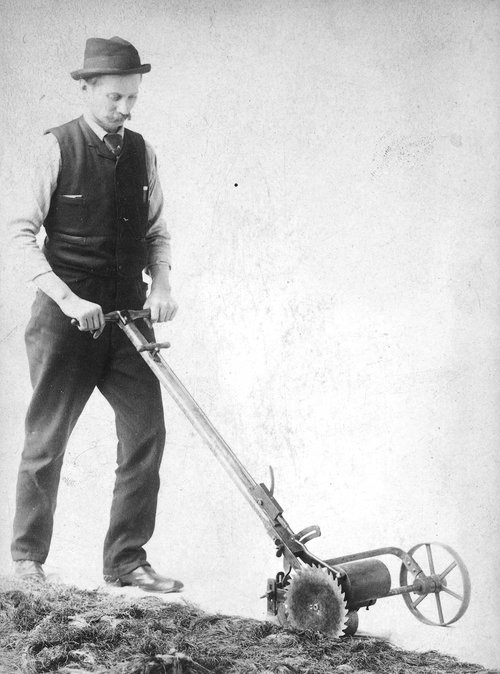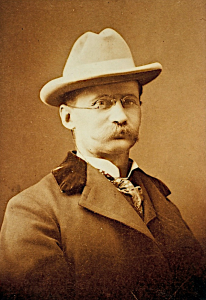(Sep. 23, 1860-Oct. 1, 1951). Born in Slesvig, Denmark, and educated at Danish Folk Schools, Jensen briefly served in the German army where, while stationed in Berlin, he learned about gardens and boulevards designed in the fashionable French and German Renaissance styles.

Jensen immigrated to the United States in 1884, settling first in Florida, then relocating to Iowa, until finally settling in Chicago, where he found work as a laborer for the Chicago Parks Department. Nursery work and small design projects prompted an affinity for the region’s natural dune and woodland landscapes that recalled those of Denmark. Jensen soon became enamored with the horizontality of the Midwest landscape, and his writings, design philosophy, and resulting designs have cemented his place in this unique Prairie School of artists, writers, architects, and landscape architects.
Jensen’s Prairie School design work dominated his work as a landscape architect for the Chicago Park District, culminating in the creation of Columbus Park (1917-1920). After leaving the Park District, Jensen opened his own design office. Private commissions were primarily in the design of extensive Chicagoland estate landscapes, including the Babson Estate (1909), owned by Henry Babson who was an entrepreneur and investor in phonograph technology; the Becker Estate (1926), constructed for businessman Abraham G. Becker; and the Rosenwald Estate (1911-1929), built for Sears and Roebuck’s Julius Rosenwald. Other designs included those for the Henry Ford (1914) and the Edsel and Eleanor Ford (1926-1932) estates in Detroit.
Jensen’s design work for the barons of the industry in Chicago and Detroit led to other clients, including residential projects in Indianapolis for banker in the town of (1922), confectioner and auto dealer Frank D. Frawley in the neighborhood (1922), and most notably (1911), one of the founders of the .
Riverdale, the landscape surrounding Allison’s mansion featured both a formal landscape adjacent to the residence, and a naturalistic landscape of planted bluff, a series of small lagoons, a meadow, and the reconfigured watercourse of Crooked Creek. These Jensen signature landscape features and the mansion are landmark components of the campus of , which the university purchased from Allison’s descendants in 1937.

After almost of century of neglect, the Allison Mansion and the adjacent Riverdale landscape underwent needed rebuilding. The formal garden’s showpiece featured a colonnade made of 24 dolomite and limestone pillars. In 2017, only some of the original colonnades remained, and those were in disrepair. These remnants sit on the edge of a bluff overlooking Marian University’s EcoLab and comprise only one of 10 Jensen landscapes that remain. Riverdale and the Allison Mansion are on the National Register of Historic Places.
Marian University and the Friends of Riverdale spent around $2 million to restore the landscape, with leading the restoration effort. Completed in 2019, it won the Central Indiana Preservation Outstanding Restoration Award.
Jensen’s other work in Indiana includes designs for parks in East Chicago and Gary, the landscape plan for Knickerbocker Boulevard in Hammond, and residential designs in Mishawaka, Hammond, South Bend, Crown Point, Terre Haute, and Crawfordsville.
Jensen also designed the grounds for the , Indianapolis residence of United States vice president (1913), and as part of a collaboration with in the development of the coast-to-coast Lincoln Highway, designed the “Ideal Section” demonstration mile in Dyer, Indiana (1923), which created a prototype landscape treatment for the then evolving automobile landscape.
In addition to being instrumental in the formation of the Cook County, Illinois, Forest Preserve system, Jensen’s work with the Illinois Prairie Club and the Friends of Our Native Landscape championed the preservation of the Indiana Dunes, culminating in the creation of the Indiana Dunes State Park, and subsequent Indiana Dunes National Lakeshore (a National Park as of 2019).

Help improve this entry
Contribute information, offer corrections, suggest images.
You can also recommend new entries related to this topic.





